Heres Some Camping Tips & Tricks at Your Fingertips
Our Kiefer Campground Blog is the information you need to make your next camping trip even more enjoyable. From RV and camping tips and tricks, to amazing campfire recipes, to advice on planning your next trip... the information below is here to help you. And please, feel free to comment and share your experiences, knowledge and favorite recipes. At Kiefer Campground, we are a family and all here to help each other enjoy the great outdoors to the fullest!
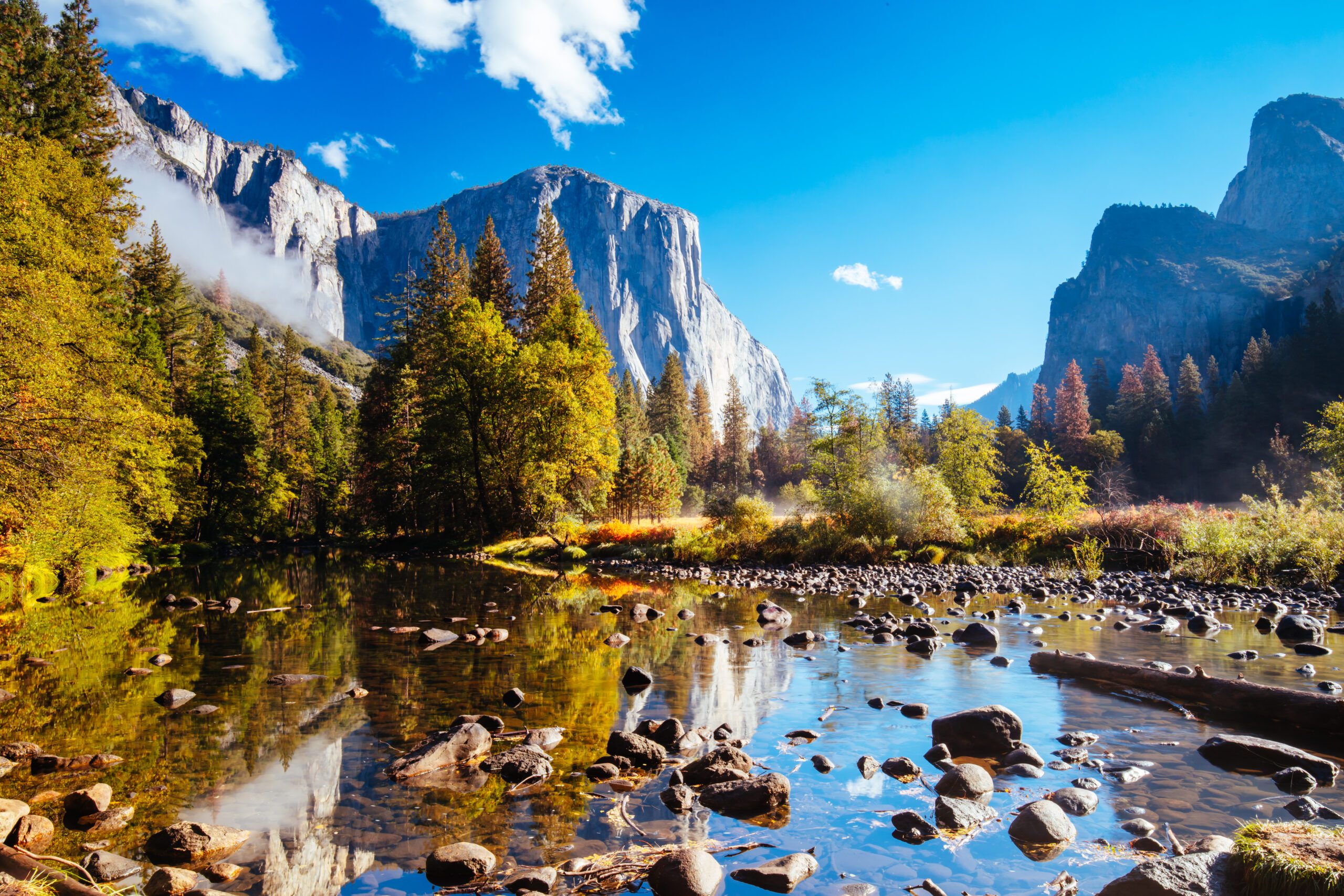
🏞️ National Parks by Name & Location
Have you visited any of the national parks? Visiting these parks while traveling and camping are the best way to see the natural world!
- Acadia – Maine
- American Samoa – American Samoa (U.S. territory)
- Arches – Utah
- Badlands – South Dakota
- Big Bend – Texas
- Biscayne – Florida
- Black Canyon of the Gunnison – Colorado
- Bryce Canyon – Utah
- Canyonlands – Utah
- Capitol Reef – Utah
- Carlsbad Caverns – New Mexico
- Channel Islands – California
- Congaree – South Carolina
- Crater Lake – Oregon
- Cuyahoga Valley – Ohio
- Death Valley – California & Nevada
- Denali – Alaska
- Dry Tortugas – Florida
- Everglades – Florida
- Gates of the Arctic – Alaska
- Gateway Arch – Missouri
- Glacier – Montana
- Glacier Bay – Alaska
- Grand Canyon – Arizona
- Grand Teton – Wyoming
- Great Basin – Nevada
- Great Sand Dunes – Colorado
- Great Smoky Mountains – Tennessee & North Carolina
- Guadalupe Mountains – Texas
- Haleakalā – Hawaii (Maui)
- Hawai‘i Volcanoes – Hawaii (Big Island)
- Hot Springs – Arkansas
- Indiana Dunes – Indiana
- Isle Royale – Michigan
- Joshua Tree – California
- Katmai – Alaska
- Kenai Fjords – Alaska
- Kings Canyon – California
- Kobuk Valley – Alaska
- Lake Clark – Alaska
- Lassen Volcanic – California
- Mammoth Cave – Kentucky
- Mesa Verde – Colorado
- Mount Rainier – Washington
- New River Gorge – West Virginia
- North Cascades – Washington
- Olympic – Washington
- Petrified Forest – Arizona
- Pinnacles – California
- Redwood – California
- Rocky Mountain – Colorado
- Saguaro – Arizona
- Sequoia – California
- Shenandoah – Virginia
- Theodore Roosevelt – North Dakota
- Virgin Islands – U.S. Virgin Islands (territory)
- Voyageurs – Minnesota
- White Sands – New Mexico
- Wind Cave – South Dakota
- Wrangell–St. Elias – Alaska
- Yellowstone – Wyoming, Montana & Idaho
- Yosemite – California
- Zion – Utah
- Newest Park: New River Gorge – West Virginia (designated in 2020)
Stay at any of our locations in the Kiefer Campgrounds family while on your way to see the national parks!
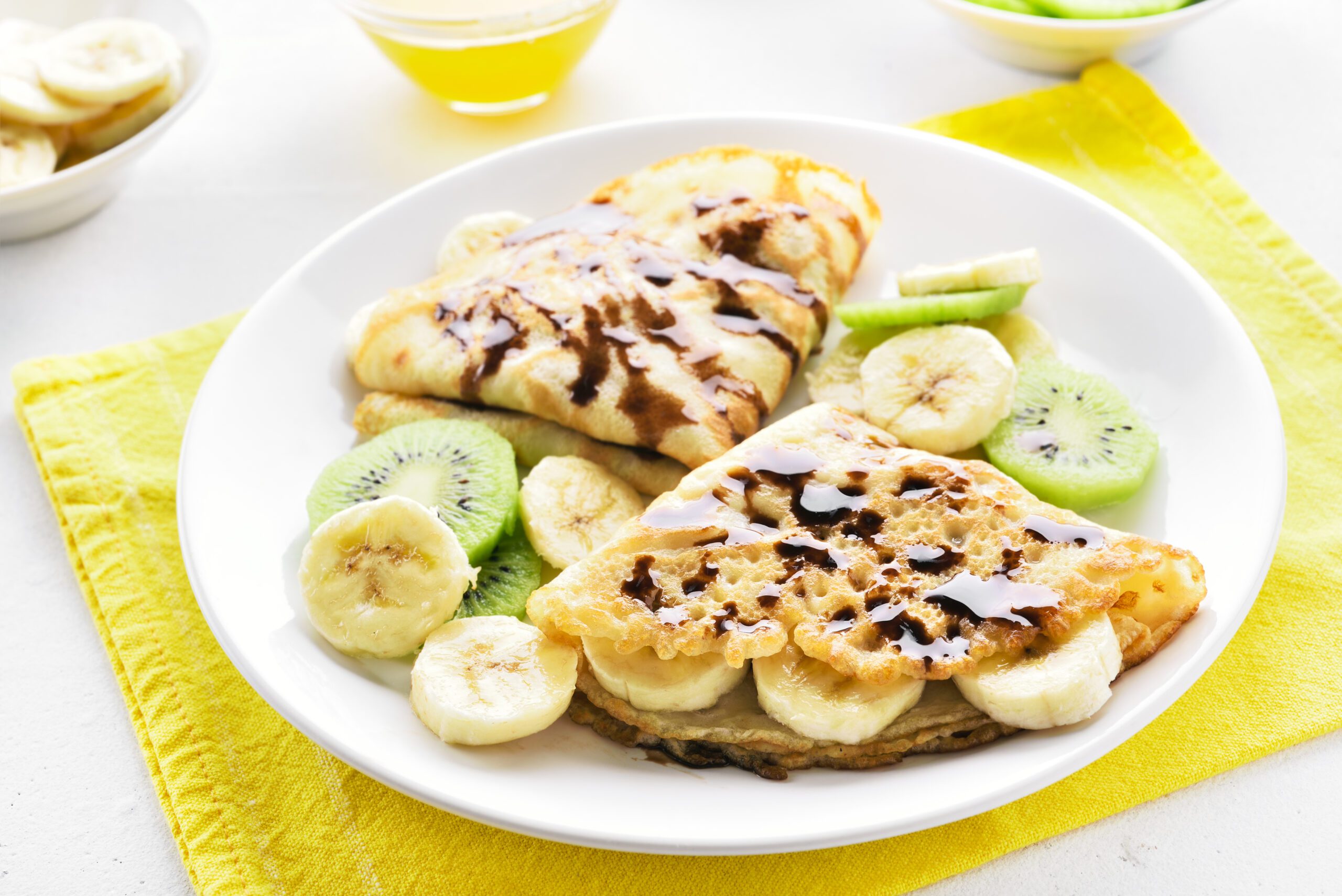
Peanut Butter Banana Wraps
Peanut Butter Banana Wraps are a quick, delicious snack or breakfast option that both kids and adults love. Here’s a simple recipe:
Ingredients:
- 1 large flour tortilla or whole wheat wrap
- 2 tbsp peanut butter (or any nut/seed butter)
- 1 banana (peeled)
- Optional add-ins:
- Honey or maple syrup (for drizzling)
- Chia seeds or flaxseeds
- Granola
- Chocolate chips
- Cinnamon
- Honey or maple syrup (for drizzling)
Instructions:
- Spread the peanut butter evenly over the tortilla.
- Place the banana near one edge of the tortilla.
- Add any optional toppings over the banana.
- Roll the tortilla tightly around the banana like a burrito.
- Slice in half or into bite-sized pinwheels for easy snacking.
Tips:
- Toast the wrap in a skillet or panini press for a warm, melty version.
- Use almond or sunflower seed butter for allergy-friendly alternatives.
- Great for lunchboxes, hiking snacks, or post-workout fuel.
These wraps are perfect for a quick snack before a long day of hiking and camping activities at Kiefer Campgrounds!
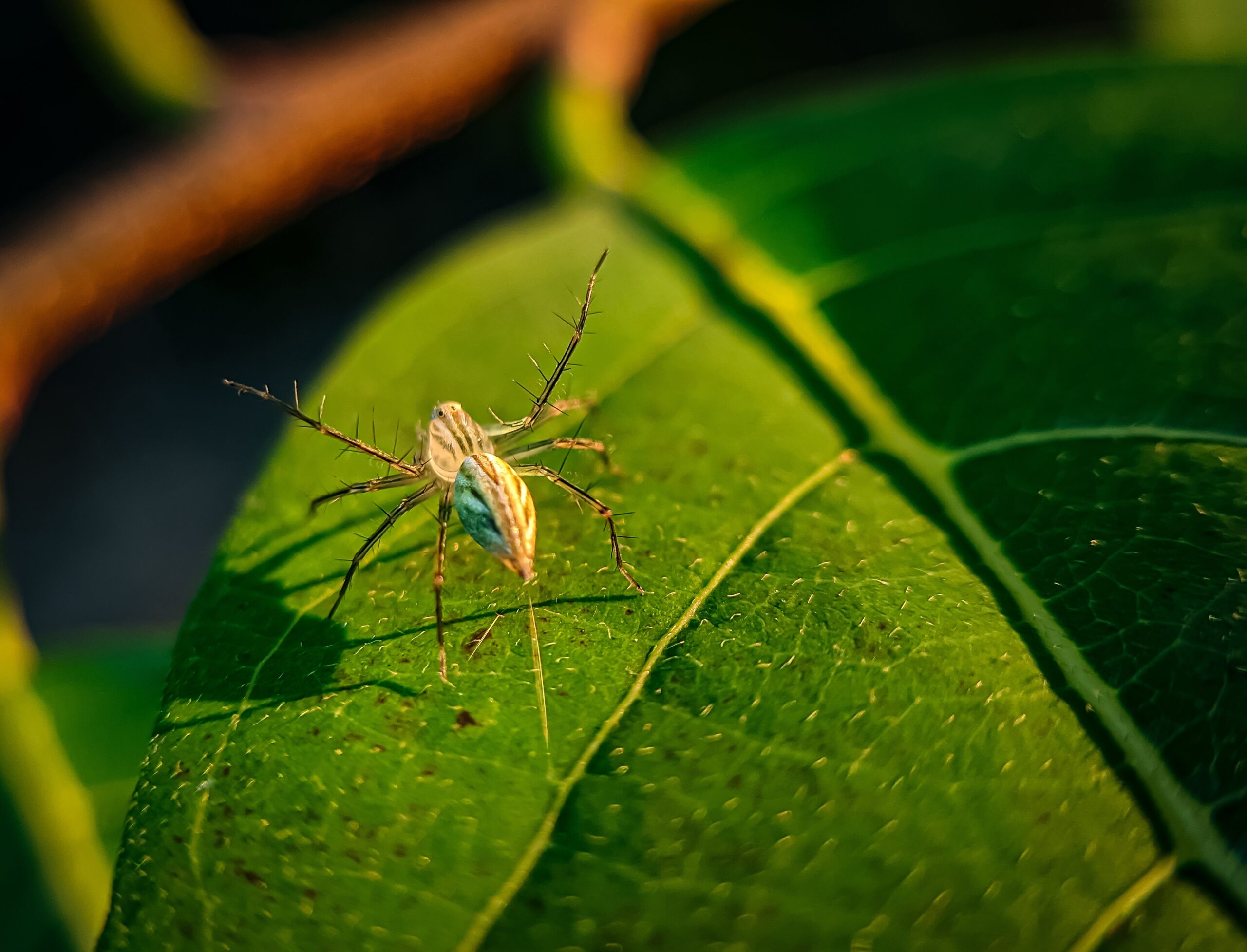
Insects To Watch Out For When Camping
When camping, it’s smart to be aware of insects that can bite, sting, or cause other issues. Here’s a list of common ones to watch out for, especially in North America:
🦟 Mosquitoes
- Why to watch out: They bite and can transmit diseases like West Nile virus or, in rare cases, Zika.
- Prevention: Use insect repellent with DEET or picaridin, wear long sleeves and pants, and avoid standing water.
🐜 Ticks
- Why to watch out: Ticks can transmit Lyme disease and Rocky Mountain spotted fever.
- Prevention: Stay on trails, use tick repellents, and do thorough tick checks after being in wooded or grassy areas.
🐝 Bees, Wasps, and Hornets
- Why to watch out: Their stings can be painful and dangerous for those with allergies.
- Prevention: Keep food covered, avoid wearing strong scents, and stay calm if one flies near you.
🐜 Fire Ants
- Why to watch out: They deliver painful, stinging bites that can cause allergic reactions.
- Prevention: Avoid stepping on mounds and check your campsite before settling in.
🕷️ Spiders
- Why to watch out: Most are harmless, but some like the black widow or brown recluse can bite.
- Prevention: Shake out shoes and bedding, and check inside tents before sleeping.
🪳 Chiggers (Harvest Mites)
- Why to watch out: Their bites cause intense itching and can last for days.
- Prevention: Wear long clothes, use insect repellent, and shower after hiking.
🦋 Biting Flies (Deer Flies, Horse Flies, Black Flies)
- Why to watch out: Painful bites, can cause allergic reactions.
- Prevention: Wear protective clothing and use strong repellents.
Protect yourself and watch out for these common insects! Be sure to be prepared with the proper camping equipment when you stay with us at Kiefer Campgrounds!

Mini Apple Pies
Mini apple pies are such a cozy, delicious treat! Here’s a classic and simple recipe!
(Makes about 12)
Ingredients:
- 2 pie crusts (store-bought or homemade)
- 2 medium apples (Granny Smith or Honeycrisp work great), peeled and diced
- 1/4 cup granulated sugar
- 2 tbsp brown sugar
- 1 tsp cinnamon
- 1/4 tsp nutmeg
- 1 tbsp flour (to thicken the filling)
- 1 tsp lemon juice
- 1 tbsp butter (cut into tiny pieces)
- 1 egg (for egg wash)
Instructions:
- Preheat oven to 375°F (190°C).
- Prepare the filling: Mix apples, sugars, cinnamon, nutmeg, flour, and lemon juice in a bowl.
- Cut the crusts: Roll out your dough and cut circles using a cookie cutter or glass (about 3.5–4 inches wide).
- Line muffin tin: Gently press crust circles into a muffin tin to form the mini pie base.
- Fill the pies: Spoon apple mixture into each crust. Add a tiny piece of butter on top of each.
- Top crust: You can cover with another dough circle, a lattice crust, or leave them open.
- Egg wash: Brush the tops with beaten egg for a golden finish.
- Bake: About 20–25 minutes, or until golden brown and bubbly.
Let them cool slightly—and boom, you’ve got bite-sized comfort!
Try this treat at any of our Kiefer Campgrounds locations!
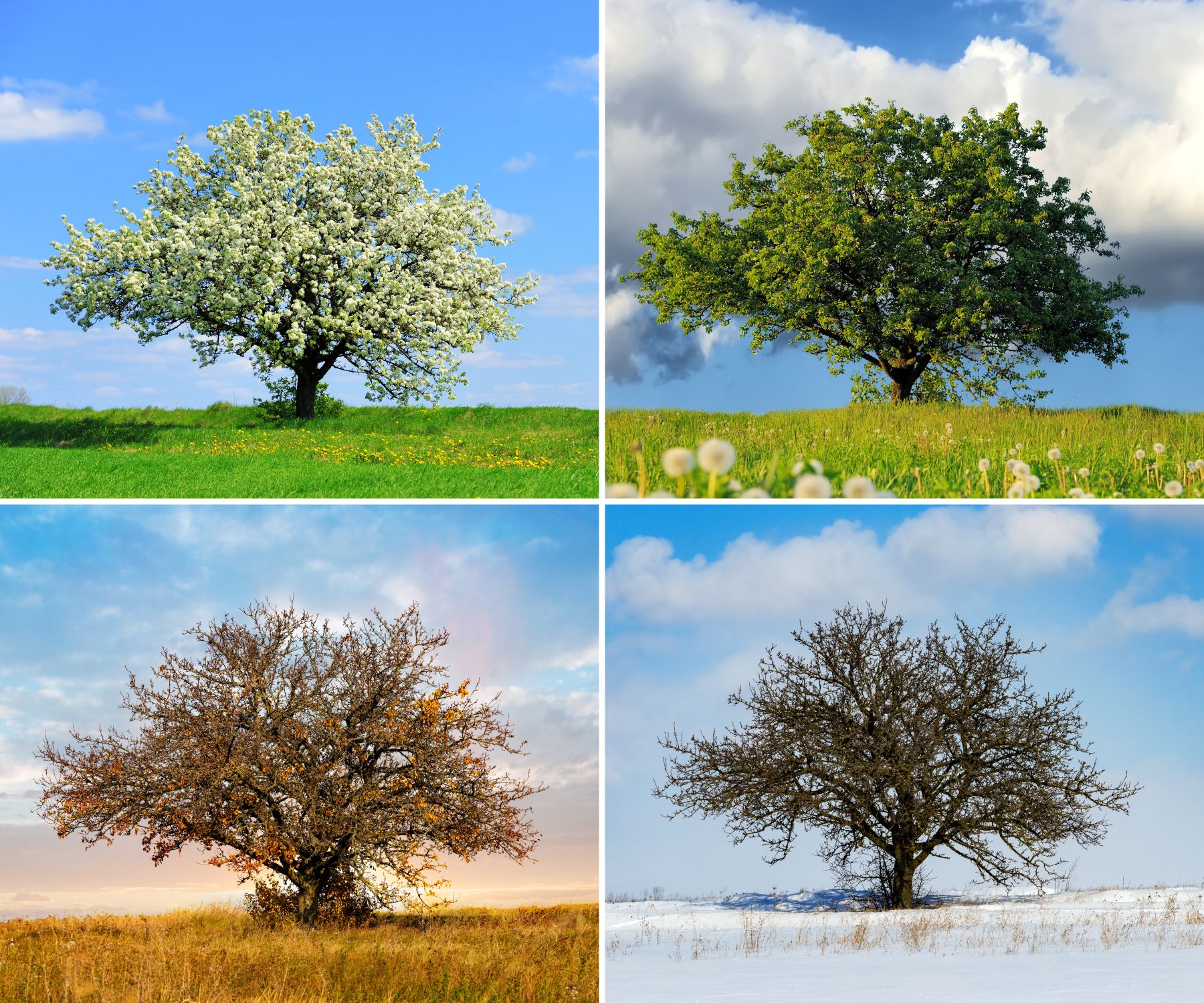
Camping In All Four Seasons – What To Expect All-Year Round
Here’s a breakdown of what to expect when camping in all four seasons, plus some tips for making the most of each one:
🌸 Spring Camping – Renewal and Rainboots
What to Expect:
- Blooming wildflowers, greener landscapes, and active wildlife.
- Rain showers are common; trails may be muddy.
- Bugs start to make a comeback (hello, mosquitoes!).
Tips:
- Pack waterproof gear and extra dry socks.
- Layer clothing – mornings and evenings can still be chilly.
- Bring bug spray and a tarp for wet ground.
☀️ Summer Camping – Sunshine and S’mores
What to Expect:
- Long days, warm nights, and busy campgrounds.
- Great for swimming, fishing, and stargazing.
- Watch for heatwaves and UV exposure.
Tips:
- Reserve your campsite early – summer’s the peak season.
- Bring a shade canopy and plenty of water.
- Use a fan or battery-powered cooling gear for tent camping.
🍂 Fall Camping – Crisp Air and Colorful Views
What to Expect:
- Cooler temps and breathtaking foliage.
- Fewer bugs and less-crowded sites.
- Shorter daylight hours.
Tips:
- Pack layers and a cozy sleeping bag.
- Don’t forget a headlamp or lantern – it gets dark faster.
- Bring hearty, warm meals like stews and chili.
❄️ Winter Camping – Solitude and Snowflakes
What to Expect:
- Peaceful, quiet campsites and stunning snowy scenes.
- Requires more gear and preparation.
- Risks include hypothermia and frozen equipment.
Tips:
- Use a four-season tent and insulated sleeping pad.
- Wear thermal layers and keep your feet dry.
- Bring high-calorie foods and a reliable heat source (like a propane heater, if allowed).
Camping year-round lets you experience nature in a whole new way each season. With the right gear and mindset, each one offers something special—from spring’s fresh blooms to winter’s hushed stillness. Whether you’re a seasoned camper or just starting out, embracing all four seasons can take your outdoor adventures to a whole new level. Stay at Kiefer Campgrounds this season!

Loaded Potato Salad
Loaded Potato Salad is the best camping recipe during the spring and summer seasons! Here’s a simple recipe for Loaded Potato Salad that you can try:
Ingredients:
- 2 pounds baby potatoes (or any type you like)
- 4 slices bacon, cooked and crumbled
- 1 cup shredded cheddar cheese
- 1/2 cup sour cream
- 1/2 cup mayonnaise
- 2 tablespoons Dijon mustard (optional)
- 1/4 cup chopped green onions (plus more for garnish)
- 2 boiled eggs (chopped, optional)
- Salt and pepper to taste
Instructions:
- Cook the Potatoes:
- Wash the potatoes and place them in a large pot. Cover with water and bring to a boil.
- Cook the potatoes for about 10-15 minutes, or until they are fork-tender. Drain and let them cool for a few minutes.
- Cut the potatoes into bite-sized pieces and place them in a large mixing bowl.
- Wash the potatoes and place them in a large pot. Cover with water and bring to a boil.
- Make the Dressing:
- In a separate bowl, mix together the sour cream, mayonnaise, Dijon mustard (if using), salt, and pepper.
- In a separate bowl, mix together the sour cream, mayonnaise, Dijon mustard (if using), salt, and pepper.
- Combine:
- Pour the dressing over the cooled potatoes. Gently fold it in so that the potatoes are evenly coated.
- Pour the dressing over the cooled potatoes. Gently fold it in so that the potatoes are evenly coated.
- Add the Good Stuff:
- Stir in the crumbled bacon, shredded cheese, chopped green onions, and boiled eggs (if using). Mix until everything is evenly distributed.
- Stir in the crumbled bacon, shredded cheese, chopped green onions, and boiled eggs (if using). Mix until everything is evenly distributed.
- Chill:
- Cover the potato salad and refrigerate for at least 1 hour to let the flavors meld together.
- Cover the potato salad and refrigerate for at least 1 hour to let the flavors meld together.
- Garnish:
- Before serving, garnish with additional green onions and crumbled bacon on top for extra flavor.
- Before serving, garnish with additional green onions and crumbled bacon on top for extra flavor.
Enjoy your loaded potato salad next time you stay at Kiefer Campgrounds! It’s perfect for a side dish or a hearty snack. Let me know if you need any tweaks to the recipe!
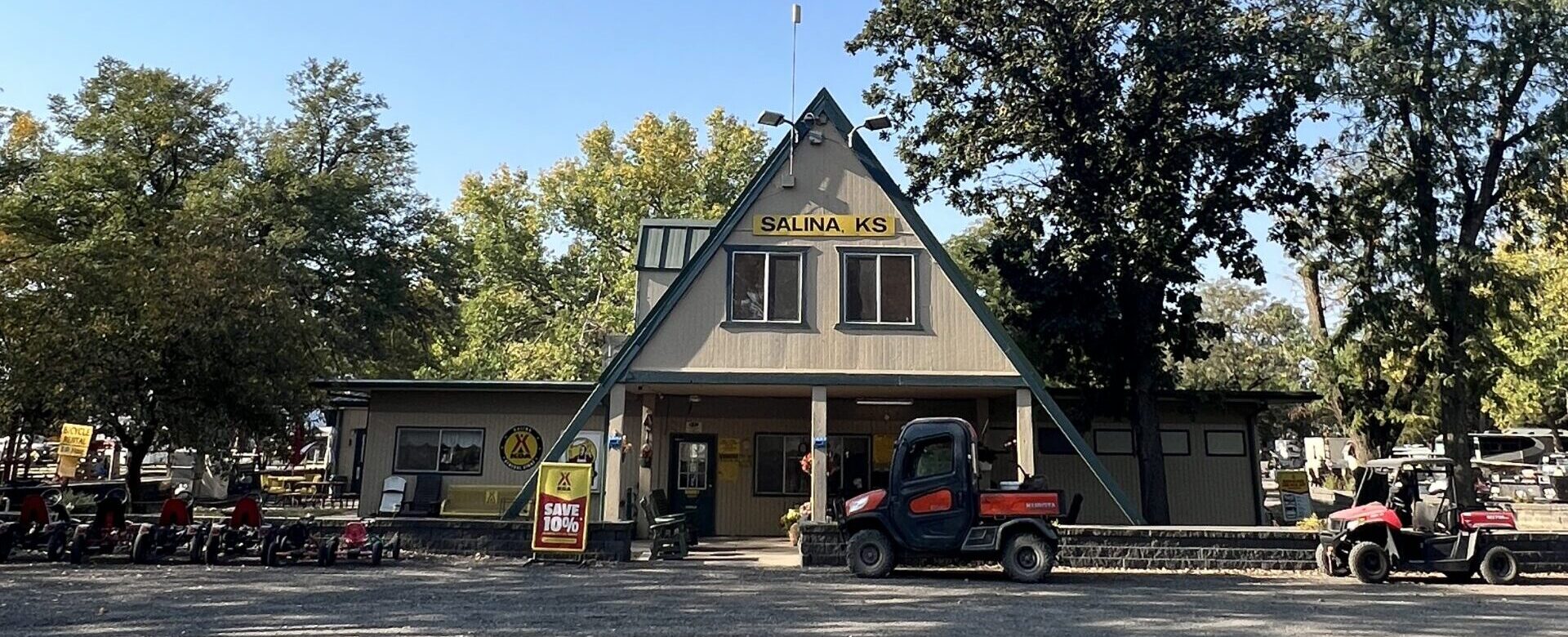
Welcome to Salina Campground!
We have added a campground to the Kiefer Campgrounds family! Salina Campground is located in Salina, Kansas, and is now officially under our ownership! We welcome you to stay with us this season! You can book online or make a reservation here!
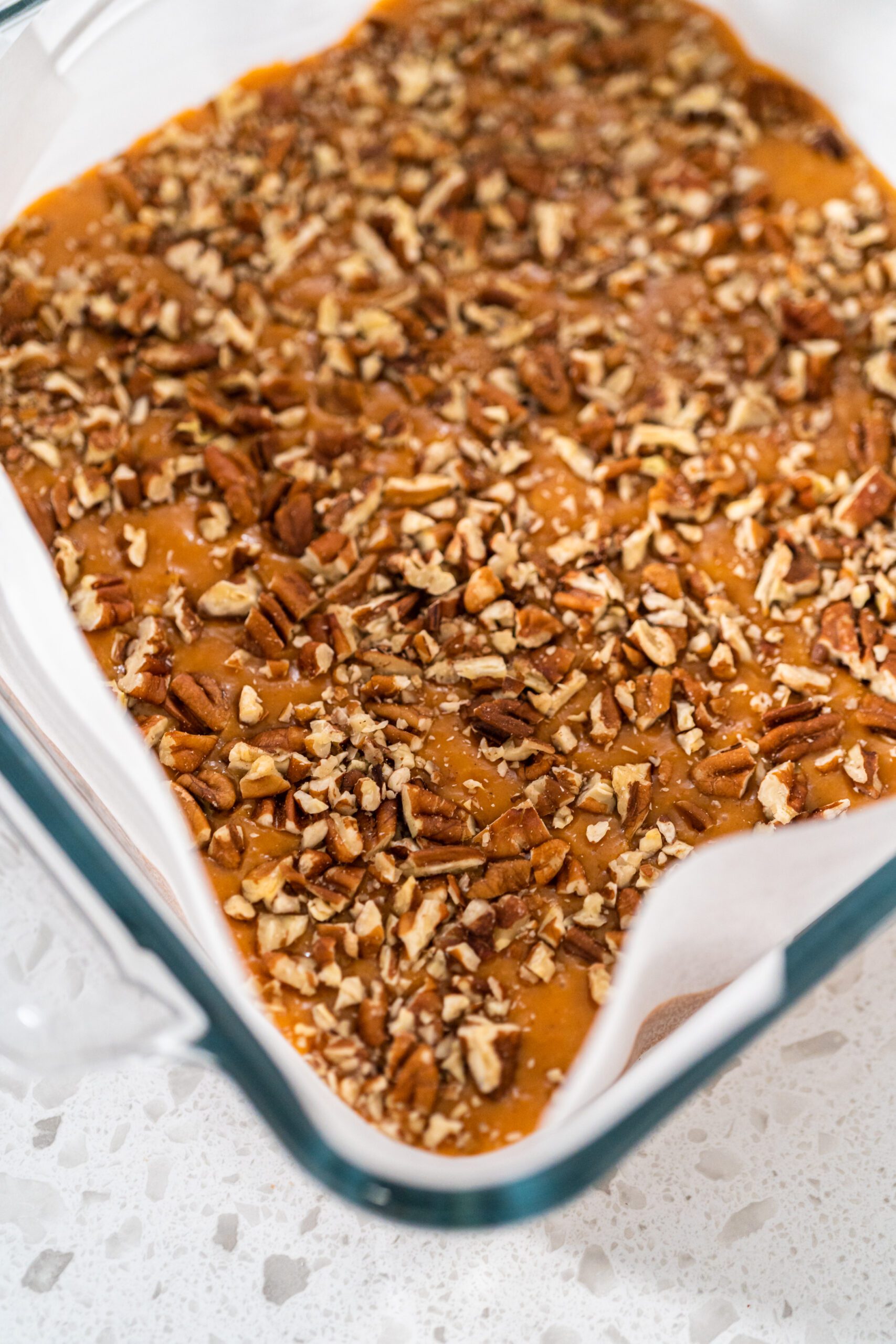
Brown Sugar Sweet Potato Casserole
Here’s a delicious Brown Sugar Sweet Potato Casserole recipe, perfect for a camping trip or any time you want a comforting side dish!
Ingredients
For the Sweet Potatoes:
- 4 large sweet potatoes (about 3 lbs), peeled and cubed
- ½ cup unsalted butter, melted
- ½ cup brown sugar, packed
- ¼ cup milk
- 2 large eggs
- 1 teaspoon vanilla extract
- ½ teaspoon cinnamon
- ¼ teaspoon salt
For the Topping:
- ½ cup brown sugar, packed
- ½ cup all-purpose flour
- ½ cup chopped pecans (optional)
- ¼ cup unsalted butter, melted
- ½ teaspoon cinnamon
Instructions
- Preheat oven to 350°F (175°C). Grease a 9×13-inch baking dish.
- Cook the sweet potatoes: Boil cubed sweet potatoes in a large pot of water until fork-tender (about 15 minutes). Drain and mash until smooth.
- Mix the casserole base: In a large bowl, combine mashed sweet potatoes with melted butter, brown sugar, milk, eggs, vanilla, cinnamon, and salt. Mix until smooth and creamy.
- Transfer to baking dish: Pour the sweet potato mixture into the prepared baking dish and spread evenly.
- Prepare the topping: In a separate bowl, mix brown sugar, flour, pecans, melted butter, and cinnamon until crumbly.
- Sprinkle over casserole and bake for 25-30 minutes, or until golden brown and slightly bubbly.
- Serve warm and enjoy!
This casserole is an easy dish to prep and take with you camping while staying at Kiefer Campgrounds! You can easily reheat it over a campfire for a nice sweet treat!
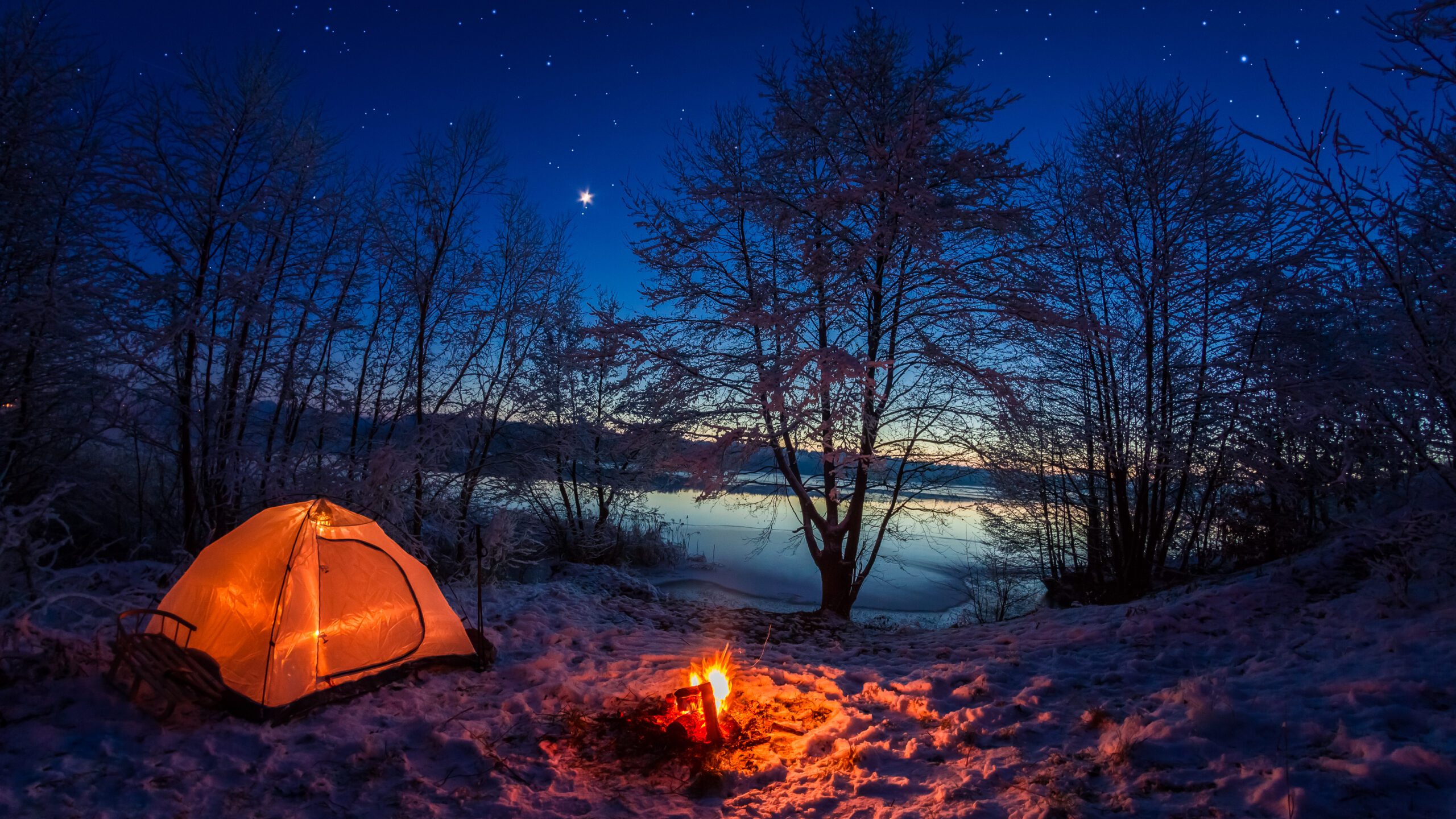
Benefits of Camping in the Winter Season
Camping in the winter season offers unique benefits that can make it a rewarding experience for outdoor enthusiasts. Here are some key advantages:
1. Serene and Quiet Atmosphere
- Winter campsites are often less crowded, providing a peaceful escape from the hustle and bustle of daily life.
- The quiet, snowy landscape creates a calming ambiance, perfect for relaxation and reflection.
2. Stunning Scenery
- Snow-covered landscapes, frost-covered trees, and crystal-clear night skies make winter camping a picturesque adventure.
- The absence of dense foliage offers unobstructed views of the horizon and wildlife.
3. Unique Wildlife Experiences
- Winter camping allows you to spot wildlife that is active during colder months, such as deer, foxes, or owls.
- Tracks in the snow can also provide fascinating insights into animal movements.
4. Better Stargazing Opportunities
- The cold, clear air in winter often results in better visibility of the stars and constellations.
- Long nights give you more time to enjoy stargazing.
5. No Bugs or Pests
- One of the biggest perks of winter camping is the absence of mosquitoes, ticks, and other pesky insects.
6. Physical Challenge and Adventure
- Winter camping pushes you to develop new skills, such as building a snow shelter or managing cold-weather gear.
- It’s an opportunity to step out of your comfort zone and build resilience.
7. Health and Fitness
- Activities like snowshoeing, hiking, or cross-country skiing provide excellent cardiovascular exercise.
- Exposure to natural light in winter can boost your mood and vitamin D levels.
8. Enhanced Campfire Experience
- Gathering around a campfire feels especially cozy in the cold, creating a memorable bonding experience.
- Warm drinks and meals by the fire are even more satisfying in chilly weather.
9. Affordability and Availability
- Many campgrounds offer lower rates or free access during the winter season.
- You’ll also find it easier to secure a camping spot without advance booking.
10. Unique Photography Opportunities
- Snow and ice formations, low light angles, and pristine surroundings provide great opportunities for photography enthusiasts.
Tips for Winter Camping
- Invest in quality gear, including a four-season tent, insulated sleeping bag, and proper clothing.
- Plan your meals to include warm, energy-rich options.
- Stay hydrated, as it’s easy to overlook water consumption in cold weather.
- Check the weather forecast and be prepared for sudden changes.
Winter camping can be a magical experience for those who are prepared and eager to embrace the cold at Kiefer Campgrounds!
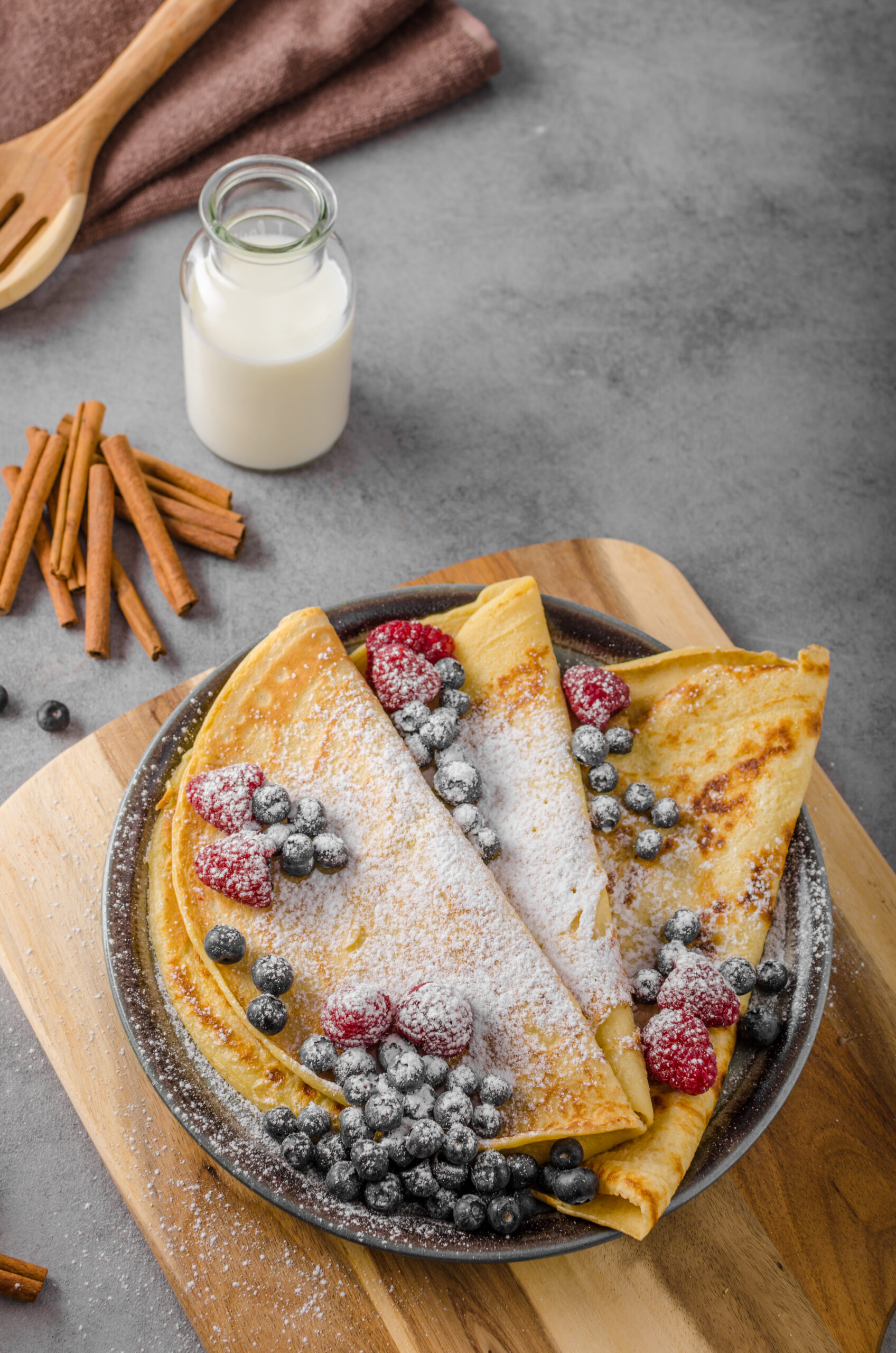
Winter Spiced Crepes
This recipe is sure to be a hit during the winter season! Who doesn’t want a warm soft customizable breakfast crepe while camping in the cold?
Ingredients:
For the crepe batter:
- 1 cup (120g) all-purpose flour
- 2 large eggs
- 1 1/2 cups (360ml) milk
- 2 tablespoons (30g) unsalted butter, melted (plus more for the pan)
- 1 tablespoon (15g) sugar (or brown sugar for added warmth)
- 1/4 teaspoon salt
- 1/2 teaspoon vanilla extract
- 1/2 teaspoon ground cinnamon
- 1/4 teaspoon ground nutmeg
- Pinch of ground cloves (optional)
For serving (optional):
- Warm spiced apple compote or pear slices
- Cinnamon whipped cream
- Maple syrup
- Caramel sauce
- Chopped nuts (pecans or walnuts work well)
- Powdered sugar dusting
- Fruit
- Hot chocolate or mulled wine on the side!
Instructions:
- Prepare the batter:
- In a large mixing bowl, whisk together the flour, sugar, salt, cinnamon, nutmeg, and cloves.
- In a separate bowl, beat the eggs and add the milk, melted butter, and vanilla extract.
- Gradually add the wet ingredients to the dry ingredients, whisking until smooth. Let the batter rest for 30 minutes (optional but enhances flavor and texture).
- Cook the crepes:
- Heat a non-stick skillet or crepe pan over medium heat and lightly grease with butter.
- Pour about 1/4 cup (60ml) of batter into the pan, swirling quickly to spread evenly.
- Cook for 1-2 minutes until the edges lift and the bottom is golden brown. Flip and cook for another 30 seconds to 1 minute.
- Transfer to a plate and keep warm under a towel. Repeat with the rest of the batter.
- Serve with a winter twist:
- Fill the crepes with warm spiced apple compote or caramelized pears.
- Top with cinnamon whipped cream, a drizzle of caramel sauce, and a dusting of powdered sugar for a snow-kissed look.
- Add chopped nuts for texture and serve with a festive drink.
- Add winter-themed fruits.
Enjoy these winter-spiced crepes while cozying up by the fire at Kiefer Campgrounds!
Family owned and operated, Kiefer Campgrounds strive to offer you the best rates for a comfortable location with outstanding service, and spotless facilities. When you stay in one of our parks, you are no longer just a happy camper, but a part of our family! We are most certain you will enjoy your stay with us. Pick your favorite location and book your spot now before it’s too late! You’ll be happy you did!




